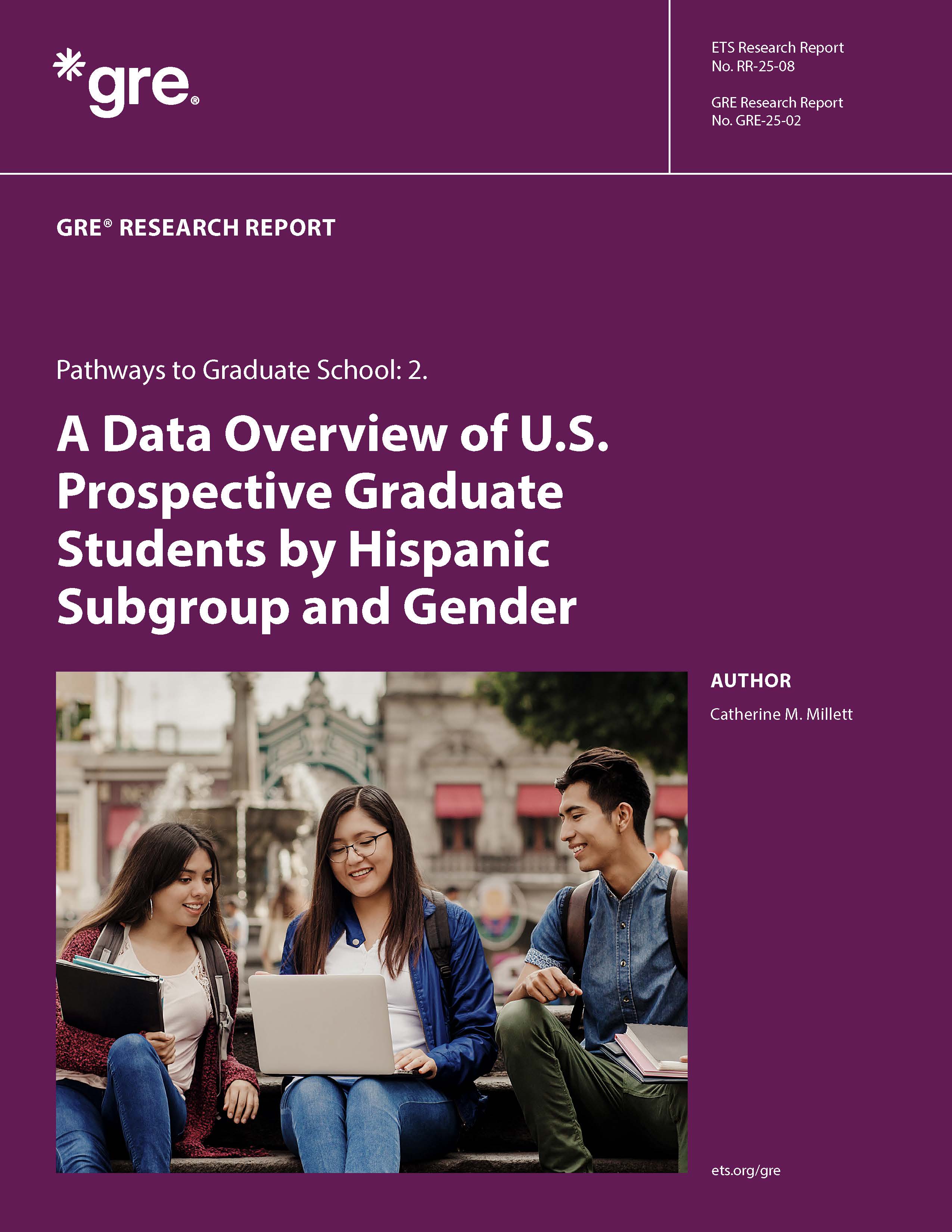Pathways to Graduate School: 2. Data Overview of U.S. Prospective Graduate Students by Hispanic Subgroup and Gender
DOI:
https://doi.org/10.64634/0dr4j239Keywords:
Hispanic students, graduate school applications, test measures, GRE®, prospective graduate students, demographics, work experience, undergraduate experience, graduate enrollment, graduate programAbstract
While discussions around increasing diversity often focus on attracting a broad range of students, the unique needs and challenges of specific groups—such as Hispanic graduate school aspirants—are frequently overlooked. This oversight is problematic given the growing demographic significance of Hispanic individuals in the United States and their underrepresentation in the highest levels of academia. Hispanic graduate students represent a small but vital part of America’s future intellectual capital. Even less frequently explored is the rich heterogeneity of Hispanic graduate school aspirations, with a particular focus on Hispanic subgroup differences and gender. The 120,445 individuals who are U.S. citizens, who provided gender and race/ethnicity information, and had scores on all three GRE® General Test measures are the subjects for this descriptive study, one of a series of five such reports. GRE General Test data from July 1, 2016, to June 30, 2021, supplemented with U.S. Department of Education and U.S. Census data, are analyzed. These individuals, referred to as prospective graduate students (PGS), are examined through six core questions: (a) Who were the PGS? (b) Where did they reside? (c) What were their education and work experiences? (d) What were their undergraduate experiences? (e) What were their plans for graduate study? and (f) What were their emerging graduate school choice sets? Key findings include the following: (a) For Mexican, Puerto Rican, and other Hispanic PGS, roughly 68% are 25 years of age or younger, with many being under 22 years of age; (b) the three Hispanic PGS groups share six states where they reside in high numbers, but each subgroup has at least one unique state where they are present in significant numbers; (c) across the three groups, more than two-thirds attended a public or private baccalaureate institution in their states of residence; (d) parental education varied across three groups; (e) in all three Hispanic subgroups, more men than women majored in physical sciences and engineering, while more women than men majored in the life sciences; (f) a master’s degree was the most common graduate degree objective, with greater interest for women than for men; and (g) there were considerable differences across the three groups regarding including at least one minority-serving institution in their graduate school choice sets. The report concludes with recommendations for future research and practical applications, particularly in the graduate school application process.
Suggested citation: Millett, C. M. (2025). Pathways to graduate school: 2. A data overview of U.S. prospective graduate students by Hispanic subgroup and gender (Research Report No. GRE-25-02). ETS.

Downloads
Published
Issue
Section
License
Copyright (c) 2025 Educational Testing Service

This work is licensed under a Creative Commons Attribution-NonCommercial-NoDerivatives 4.0 International License.

